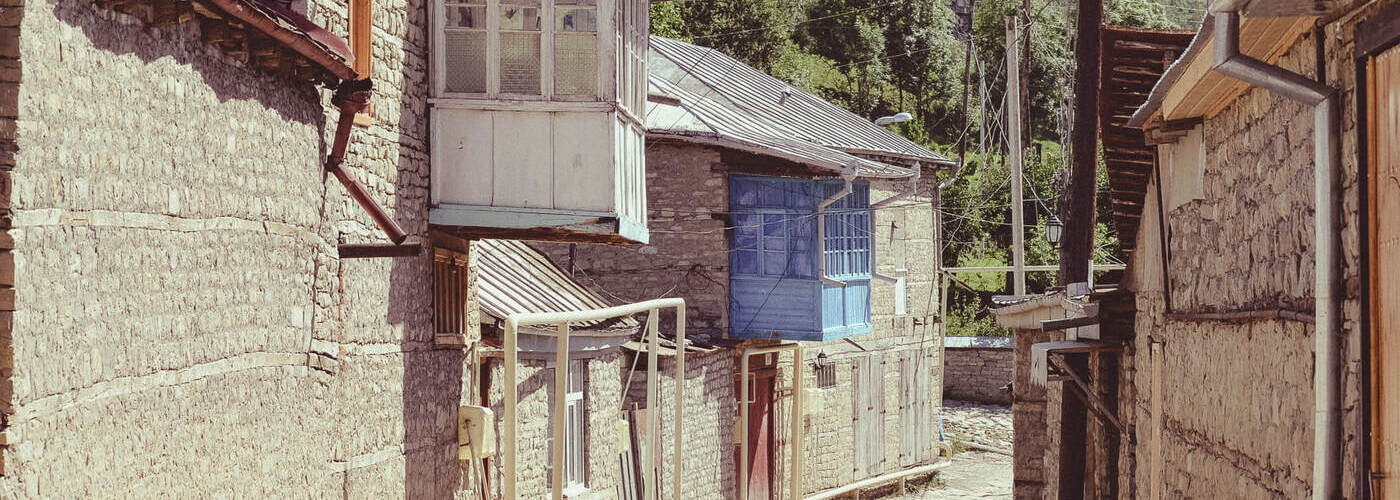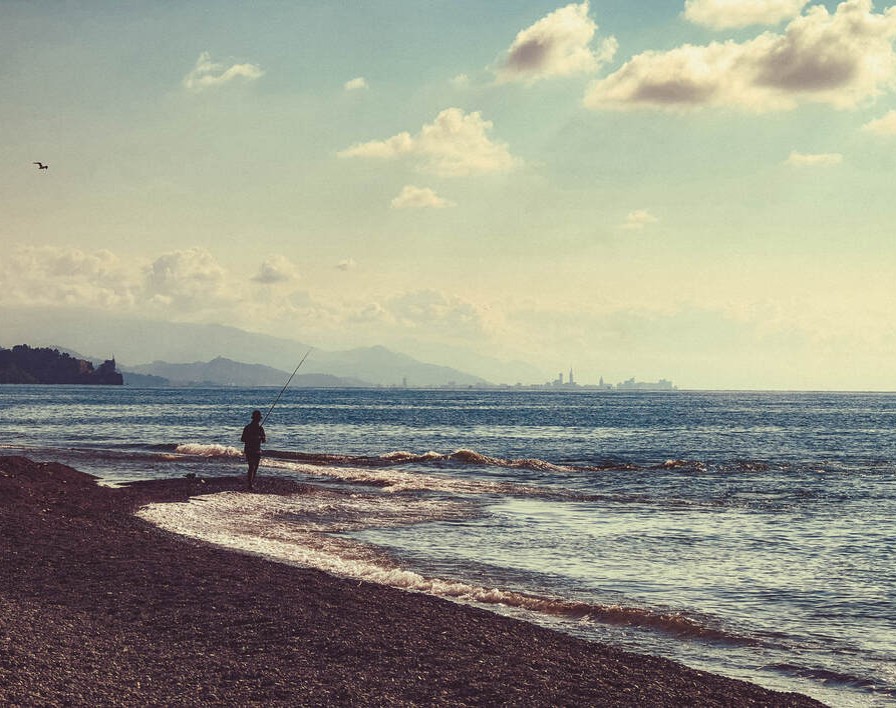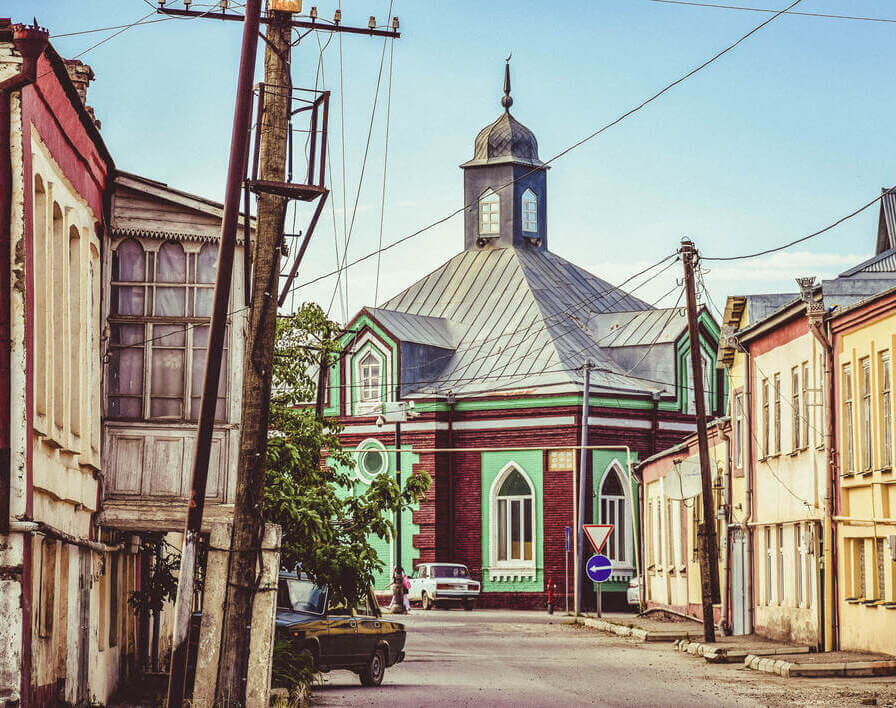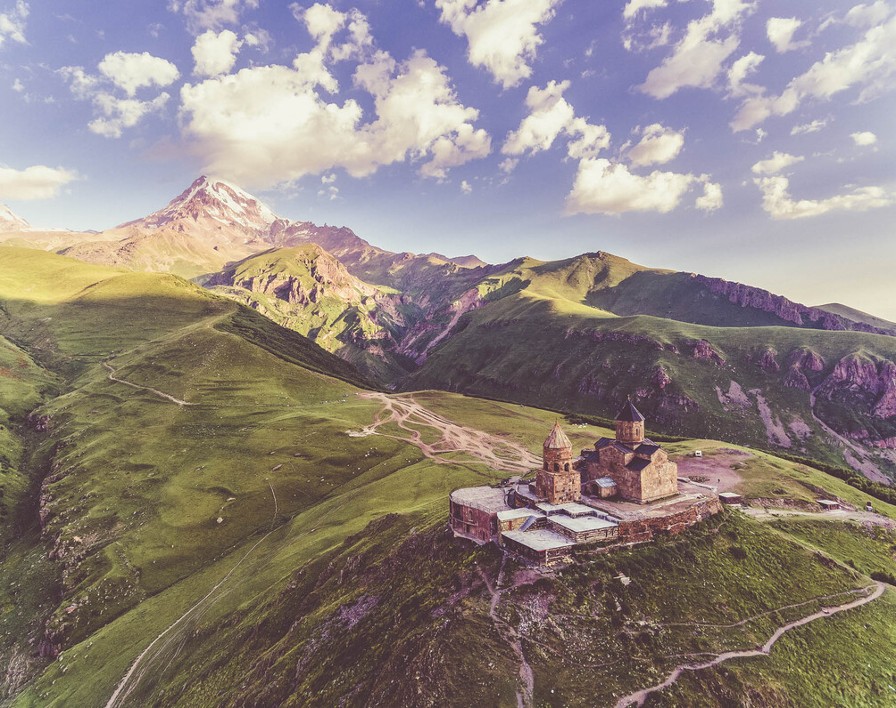- 4
- 1
- 2
- 3
- 3
- 2
- 2
- 2
- 4
- 2
- 4
- 4
- 1
- 1
- 1
- 1
- 1
- 1
- 1
- 1
- 1
- 3
- 3
- 1
- 3
- 3
- 3
Lahic

If you want to learn more about Azerbaijani traditions of carpet weaving, brass, leather, and copper processing, the village of Lahic is the perfect place for you.
Lahic, one of the oldest settlements in Azerbaijan, lies deep in the southern foothills of the Great Caucasus on the slopes of the Niyal mountain range. The barren surroundings of the village, 1,200 to 1,500 meters above sea level, are not particularly fertile, which is why the locals had to find alternatives to agriculture early on in order to secure their income. And so Lahic developed more and more into a center of craftsmanship.
Living open-air museum
The village is also an example of the early urbanization of the country. Lahic is home to historic buildings such as mosques and hammams, paved streets and squares, and a unique sewage system.
Being more than 1,000 years old, it is one of the oldest sewer systems in the world. The houses, the streets, and even the sewage system were all built with river stones found in the area. Today, Lahic actually is an open-air museum filled with life.
Every craftsman has his own square
The fact that the Lahic village is divided into three parts Baadvan, Asavarro, and Araghird is also exciting. Each of the three parts has its own craftsmanship and has its own village square, mosque, cemetery, and hammam.
The most famous craftsmen from Lahic are the copper workers. Artifacts from the village are exhibited in numerous museums in Azerbaijan, Georgia, Russia, and Europe and still fascinate today. The second most important branch of the craftsmen’s village is leather processing. Shoes, belts, jackets, and book covers from Lahic were appreciated far and wide.
Today, there is only a handful of companies in Lahic that process copper by hand. What can still be bought are the containers called «Guyum», which can be used to fetch water. Running water has only been available in Lahic for about 10 years. Before that, the locals fetched the water directly from the spring.
The processing of copper in Lahic is a matter for men, women have always been responsible for knotting the famous carpets.
Unique souvenirs from Lahic
Although the village is small, you can spend hours strolling along the cobblestone streets and looking at all kinds of crafts in the various studios, workshops, and shops. Carpets, plates, cups, glasses, swords, knives, and much more are on offer. Certain objects are nowhere else in the world to be seen, let alone bought. The mountain village of Lahic is unique in many ways. Furthermore, many local people sell their spices and herbs on the streets.
Hiking on the holy mountain Babadagh
The uniquely beautiful nature in the surroundings of Lahic is ideal for hiking. There is a 7.7km long round trail with only 400 meters of altitude difference, on which you can discover the hills, mountains, and forests in the region in a comfortable way. A little more strenuous and spread over several days is the ascent to the mountain Babadagh (3,629m). The bare summit offers a magnificent 360-degree panorama.
The ascent is strenuous, but not technically difficult. In the summer months, numerous pilgrims are on the way to the mountain, which is considered sacred in Azerbaijan.




